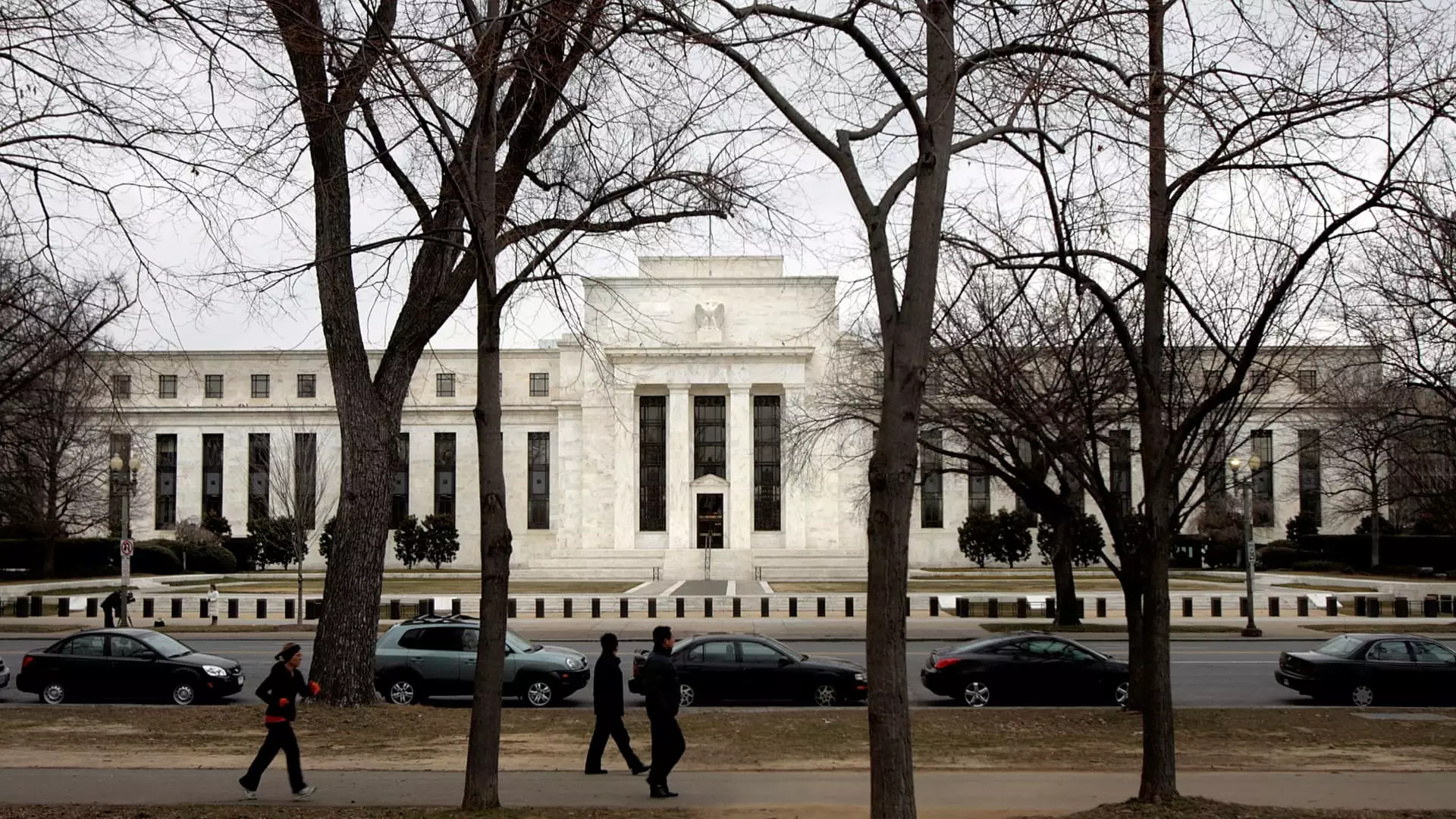In a widely anticipated move, the Federal Reserve has announced that it will maintain its current interest rates. This choice comes against a backdrop of persistent inflation that continues to hover above the Fed’s target of 2%. The decision marks a significant moment, particularly after a substantial cut of a full percentage point last year. This approach aligns with broader concerns about economic stability and consumer pressures, setting the stage for future financial strategies amidst growing public and political scrutiny.
The announcement follows vocal pressure from President Donald Trump, who recently renewed his demand for immediate interest rate reductions. Such political interference raises critical questions about the Federal Reserve’s autonomy. The recent CNBC Fed Survey reflects a tempered outlook, predicting that only two additional rate cuts may occur later this year, mirroring expectations set forth by Fed officials in their latest economic forecasts.
Inflation has emerged as a considerable obstacle for consumers, an issue that has intensified since the pandemic’s onset when prices surged to levels not seen since the early 1980s. The Federal Reserve has attempted to counteract these inflationary pressures through a series of aggressive interest rate hikes, which have resulted in the highest benchmark rates in over two decades. These hikes have had a profound effect on consumer lending, causing borrowing costs to skyrocket and leaving many households grappled with financial strain.
Moreover, with interest rates remaining high, consumers can expect little respite from their financial burdens. Experts predict that any upcoming rate cuts will be neither substantial nor frequent enough to significantly alleviate the financial weight on individuals and families. This lack of action from the Fed casts doubt on its effectiveness in stabilizing the economy, especially for those already feeling the brunt of high prices on goods and services.
The ramifications of the Federal Reserve’s policy decisions extend across various financial products, from credit cards to mortgages and auto loans. Credit cards, which typically carry variable rates directly linked to the Fed’s adjustments, have seen average interest rates surge from 16.34% to over 20% in a short span. While analysts do forecast a gradual decline in annual percentage rates (APRs), these expected reductions will likely only ease the burden from historically high levels.
Greg McBride, chief financial analyst at Bankrate, has cautioned consumers to temper their expectations. He asserts, “The rate cuts are not going to be big enough or often enough to do the heavy lifting for you.” This sentiment is echoed by Matt Schulz, chief credit analyst at LendingTree, who advises consumers explore alternative strategies to manage high-interest credit card debt, such as seeking personal loans with lower rates or utilizing zero-interest balance transfer offers.
For prospective homebuyers, the landscape is equally daunting. Despite the fixed nature of 15- and 30-year mortgage rates, rising loan costs and inflation have eroded purchasing power significantly. Currently, the average rate for a 30-year mortgage stands above 7%, which has a direct impact on the overall affordability of homes. As mortgage rates are forecasted to remain within the 6% range throughout the year, the constraints on purchasing power underscore the ongoing struggles faced by potential buyers in a volatile market.
Joseph Yoon, consumer insights analyst at Edmunds, notes that the situation is exacerbated by rising car prices as well; even with fixed auto loans, consumers are confronted with increasing payments. The average new vehicle transaction price now hovers around $50,000, pressuring buyers to seek out loans that stretch their budgets beyond manageable limits.
The fixed nature of federal student loan rates means that current borrowers won’t feel immediate effects from Fed rate fluctuations; however, new students borrowing for the 2024-25 academic year will find rates increased to 6.53%—up from 5.50% in the previous year. This increment highlights structural challenges within the education financing system, as new borrowers navigate an increasingly costly landscape.
In contrast, the outlook for savers seems more optimistic. As the Federal Reserve pauses on rate cuts, yields on high-yield savings accounts remain attractive, nearing 5%. Schulz suggests that consumers take advantage of this environment, observing, “While there are challenges for those with debt, it is a great time for savers to explore their options.”
The Federal Reserve’s decision to maintain interest rates reflects ongoing uncertainties within the economy. While inflation poses significant challenges for consumers, the repercussions of high borrowing costs spill over into various sectors and financial products. As the Fed navigates these complexities, both consumers and market analysts will likely remain vigilant, anticipating future changes that could shape the economic landscape in the years to come. The divergent experiences of borrowers and savers underscore the multifaceted nature of the current economic climate, highlighting the necessity for strategic financial planning in these uncertain times.

